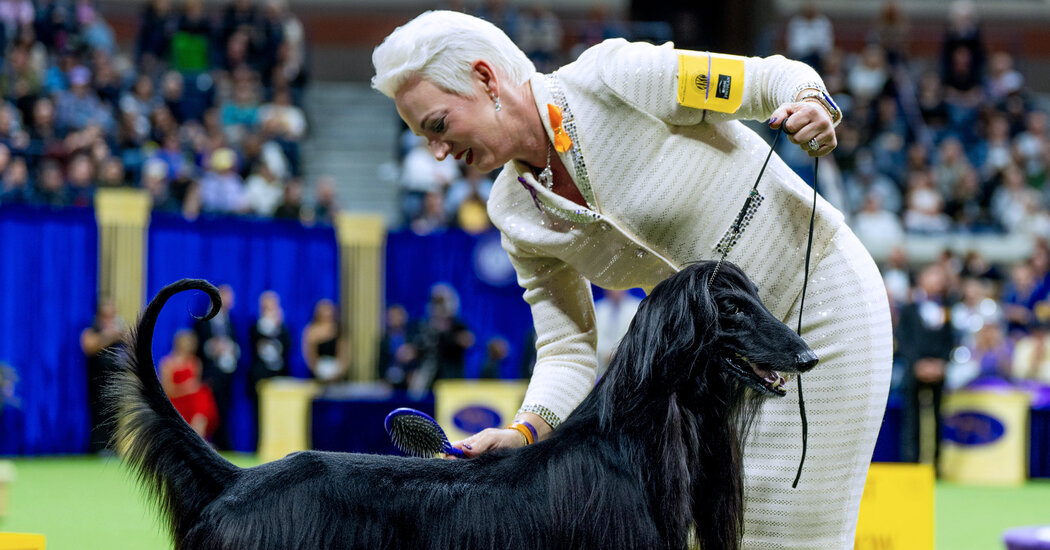Only one dog can win best in show at the Westminster Kennel Club Dog Show, and this year the honor went to Sage, a spectacularly coifed miniature poodle whose main-character energy was hard to ignore. But what of the dogs she defeated?
Seven dogs entered the final round, each representing distinct canine groups: herding, working, hound, terrier, toy, sporting and non-sporting. (Don’t ask what “non-sporting” means; theoretically the group could just be labeled “other.”) The dogs were big and small, fast and slow, excited and phlegmatic — a dizzying range of canine pulchritude and behavior.
Each dog was judged on how well they adhered to the Platonic ideal of their breed. But even the losers were winners. Here’s a look at what made the seven finalists champions in their own right, and impossible to forget.
Sage: Most Likely to Cancel a Date to Wash Her Hair
It takes a lot of work — and a lot of product — to tame your hair into the sort of gravity-defying, topiary-evoking extravaganza expressed so perfectly by Sage, a miniature poodle, who was this year’s Westminster champion. Never mind that Sage had to be carried into the ring by her devoted handler for the final round, haughty as an empress, while the other dogs — including Comet, with his much shorter legs — entered the usual prosaic way, by jogging without assistance. (Maybe this is why miniature poodles belong to the non-sporting group.) Sage’s mysterious allure and amusing gait — when she did bestir herself to move, it was in a kind of dainty, reluctant trot — stole the judge’s heart, if not America’s.
Louis: Most Supermodely
The hound group had won best in show in consecutive years at Westminster, and while Louis, a 6-year-old Afghan hound, couldn’t quite live up to those expectations, he left everyone feeling like they could do more with their look. His long and lustrous black hair was worthy of a shampoo commercial, or a 1980s rock band.
Monty: Most Likely to Petition for a Four-Day Work Week
In real life, dogs from the working group are meant to do specific human-adjacent jobs, and giant schnauzers are no exception. According to the American Kennel Club, they’re regularly used in police, military and search-and-rescue work. Monty, a 3-year-old who entered Westminster as the top-ranked show dog in the United States, looks more like a white-collar worker. He bore his loss with the sort of dignity and self-possession you would expect from a giant in his field (of schnauzers).
Comet: Most Impractical
The dogs of Westminster are judged on how well they meet the specifications of their breed, not whether they’d be up for a game of fetch. So Comet, a 3-year-old Shih Tzu, can be forgiven for exuding an air of luxury, rather than one of utility. He’s from just outside Toledo, Ohio, but the toy group champion seems like he’d be at home in one of the extremely tall apartment buildings in midtown Manhattan.
Micah: Most … Sporting?
The groups, for the most part, make sense. Toy dogs are small, working dogs work, herding dogs herd. The sporting group has plenty of dogs that live up to the name — golden retrievers and labradors are wildly popular as active pets. But Micah, a 2-year-old black cocker spaniel, looks more like a puppy wearing his mom’s mink coat than a hunting companion.
Sarah Lyall and Benjamin Hoffman contributed reporting.







